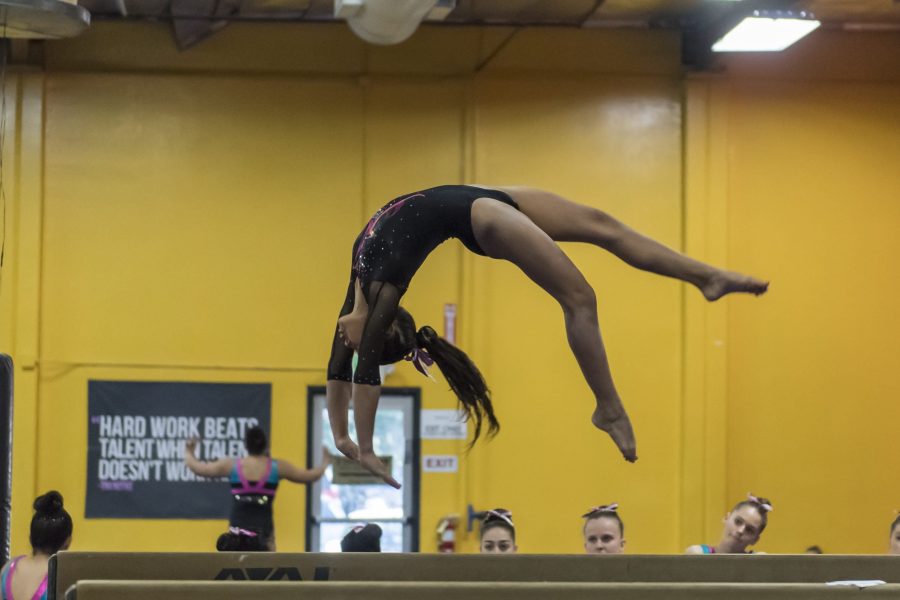Junior Lauren Levine walks onto the gymnastics floor. She waits for the music to start, then begins her routine, finishing with a flourish. Her routine is one of many she practiced for her after-school gymnastics club.
While Levine has competed on her club team for the past nine years, many high schools in the Bay Area have a school gymnastics team that gives its students a chance to try out the difficult sport without as much pressure or experience.
Junior Anika Wahi, the captain of Wilcox’s three-person gymnastics team in Santa Clara, loves being on the team, but said there are also many struggles that come with maintaining the team at her school, especially getting quality equipment and finding enough people to join the team.
“My school doesn’t have a very big gymnastics team and doesn’t have equipment. So we practice at Cupertino High School with three other high schools,” she said. “But Cupertino also does not have the best gymnastics equipment as a public school, so our floor is the wrestling mat.”
Wahi also said the limited equipment at Cupertino is old and of poor quality, and Garry DeGuzman, the coach for the multi-scholastic team, agrees.
“The equipment is definitely sound, as far as safety goes. It’s just that it could be better. It’s just a little bit older and more used,” DeGuzman said.
Despite the challenges that having and maintaining a high school team has, Levine and club gymnast freshman Svina Narang said there are enough benefits to having a gymnastics team to make it worth it.
For one, Narang said a club team is typically too hard and intimidating to join as a high schooler.
“Many people (on a club team) would have been doing it their whole lives so (someone starting in high school) might feel behind,” Narang said. “Club would be a lot more training, hours wise, and it would be a lot more intense.”
For schools offering a high school-level recreational team, starting gymnastics at an older age would be easier, Narang said. As opposed to club gymnastics, a high school team wouldn’t need its gymnasts to compete at levels that can only be reached with years of practice.
“People who haven’t ever done it can try it, even if they don’t want to (compete at a high level),” Narang said.
Levine adds that having a school team is also a good way to get more kids who don’t want to join a club team to try the otherwise niche sport.
“It might be nice to meet more people at school who do gymnastics because there’s only a couple that I know,” Levine said. “It could get other people to try the sport who wouldn’t try otherwise, because it’s really hard to start when you’re older.”
Narang and Levine both said they enjoy the pressure and difficulty of competing for a club team. However, a lot of people looking to try the sport, particularly as high schoolers, are likely interested in something more relaxed that allows more time for doing homework and spending time with friends, Narang said.
“It’s a lot more chill than a club environment because they’re able to do not as difficult skills and it’s more fun,” Narang said. “It’s less training so you can have more outside time.”
Both Narang and Levine said they would sign up for the school team if Paly offered it, mainly to be part of the school sports community and meet new people. Narang said she wouldn’t quit her club team to join the school one, but rather compete for both.
“I think they should bring (Paly’s team) back,” Narang said, referring to the team that Palo Alto and Gunn High School shared until 2014. “I would definitely join. Maybe I wouldn’t practice as much with high school and more just with my own gym, but I would still compete.”

